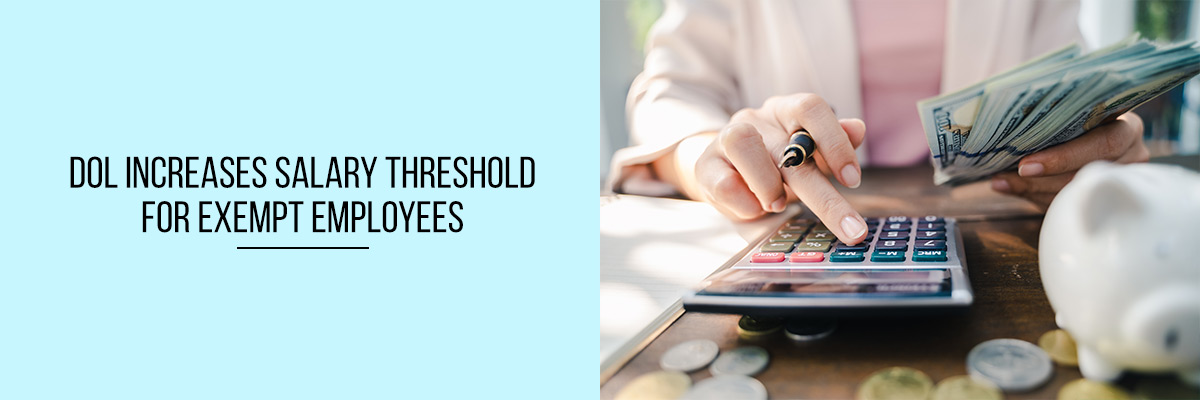The Fair Labor Standards Act (FLSA) requires that any employee who works more than 40 hours per week must be paid at least one and one-half times their regular hourly wage for every hour they work beyond 40 hours. However, many employers operate their businesses under the collective bargaining agreement (CBA) that they have with their workers. Any worker who is covered by the CBA may be exempt from the FLSA requirements.
Recently, DOL (U.S. Department of Labor) issued a rule that will raise the minimum salary requirement to be recognized exempt from overtime under the FLSA. The rule will raise the minimum salary threshold from $23,660 annually to $47,476 annually. This will affect approximately 5.6 million non-professional employees who currently are eligible to receive overtime pay under the FLSA.
Here is an overview of the new regulations and guidelines.
“Exempt” Employees
The DOL has revised the regulations that employers must follow when it comes to the issue of paying exempt employees. The Fair Labor Standards Act (FLSA) requires employers to pay non-exempt employees a minimum wage of not less than $7.25 per hour. Businesses with hourly employees who earn more than $23,000 per year must also comply with the FLSA’s overtime provisions, which require employers to pay time-and-a-half for hours worked more than 40 in a workweek.
To be considered as “exempt,” workers must meet all of the following breakdowns:
- Salary-level test: Workers must receive a weekly wage that meets the minimum obligations. Until 1st January 2020, the minimum salary requirement was $455 per week for the professional, administrative, and executive exemptions.
- Salary-basis test: The organization must pay workers their full pay in any week they work, regardless of the quantity or quality of the work.
- Duties test: The worker’s primary job responsibilities must satisfy certain criteria.
Potential Impact on Exempt Employees
The DOL recently announced in the final rules on the new salary threshold for executive, administrative, and professional (EAP) employee exemptions that all employees earning over $47,000 in annual salary must be treated as non-exempt, or alternatively, reclassified as exempt employees, if they otherwise meet the requirements of the Fair Labor Standards Act (FLSA), Section 13(a)(1), “Administrative, Professional, and Outside Sales Employees.”
The new rule in the Fair Pay and Safe Workplaces Executive Order (EO) applies to all federal contractors and subcontractors who have employees and seek federal contracts exceeding $500,000 in a calendar year. Some employers may not be aware that the DOL may review their payroll practices to determine compliance with the Executive Order. If DOL finds that any contractor or subcontractor has a “systemic” pay practice that is not compliant with the Executive Order, DOL may initiate an enforcement action against the organization.
Final Words
The U.S. Department of Labor estimates that the final rule will out-turn in 1.1 million new non-exempt workers. Employers can review employee positions and raise salaries as necessary until the end of the year.
To know more about the new regulations and guidelines regarding DOL, attend the Compliance Prime webinar.


